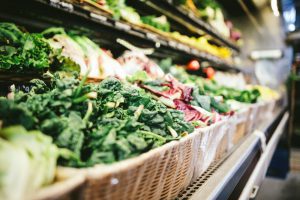
When I started eating healthier, I noticed the prices of the fresh produce. At first, I didn’t understand why strawberries were $4 during the summer and $6-7 in the winter; I learned that different seasons yield better types of fruits and vegetables. Certain types of produce, like kale and tomatoes, can be grown year-round. Produce that is in season can taste fresher and sweeter.
One of the easiest places to buy fresh produce that is in season is your local farmer’s market; these also help support local farmers. On weekend mornings, I enjoy going to the farmer’s market to start my day; there is always a wide variety to choose from. Sometimes, I may find a vegetable that I have never heard of before and can look up recipes including that item.
Depending on your geographical location, some of these items may vary but this is generally the fruits and vegetables you can easily find in the winter months:
Vegetables:
- Artichokes
- Beets
- Broccoli
- Brussels sprouts
- Cabbage
- Carrots
- Cauliflower
- Celery
- Collard greens
- Kale
- Onions and shallots
- Potatoes and sweet potatoes
- Radish
- Spinach
- Turnips
- Winter squash (yellow squash, acorn squash, butternut squash, pumpkin)
Fruits:
- Cranberries
- Grapefruit
- Kiwis
- Kumquats
- Lemon
- Oranges, blood orange, and tangerines
- Pears
- Pomegranates
- Tomatoes
No matter where you purchase your fresh produce from, remember to properly wash, dry, and store them. Try putting the fruits and vegetables in clear containers so they can be seen for a quick snack.
If you are eager to put your new ingredients to use, try this recipe for a Mediterranean Three Bean Salad.
You Might Also Enjoy:
Don’t miss another great blog: Subscribe Now
